SLU Ninkovic Lab
Plants do not see, hear, smell or test, but they communicate with each other in different ways including chemical signalling between different plants pairs. The aim of our research is to develop sustainable crop protection strategies based understanding of the interactions between plants, insects and their natural enemies. Led by Velemir Ninkovic.
Projects
Multifunctional cropping systems – linking plant-plant interactions, insect pest control and wildlife
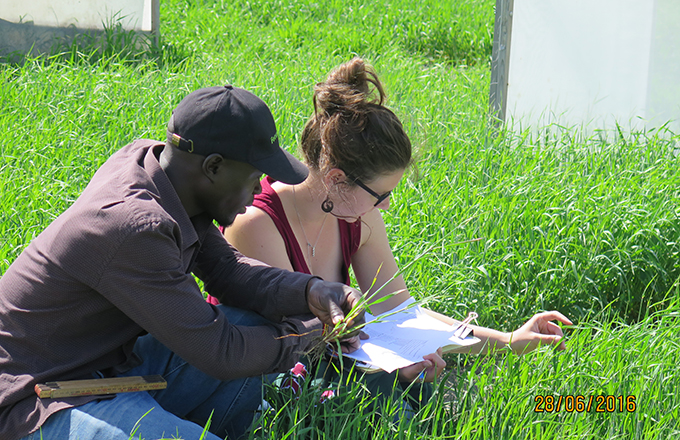
Aphids are the most damaging pests in organic cereal production in Sweden and effective control measures are lacking. In this project we work closely with farmers, with the main objective to develop a strategy to manage aphid populations, increasing
production and sustainability.
We have recently shown that chemical plant/plant interactions reduce aphid plant acceptance and enhance biological control by natural enemies. These findings open the way for aphid control exploiting these interactions in organic farming systems.
Our scientific approach is to exploit chemical plant/plant interactions between plants in two cropping systems: barley undersown with different plant species and barley variety mixtures.
This project will provide policy makers and advisors with vital information for development and implementation of dynamic (landscape- and farm type-dependent), cost-effective and viable conservation measures for sustainable farming that are supported by farmers.
Contact: Velemir Ninkovic, Robert Glinwood, Sönke Eggers
The importance of touch
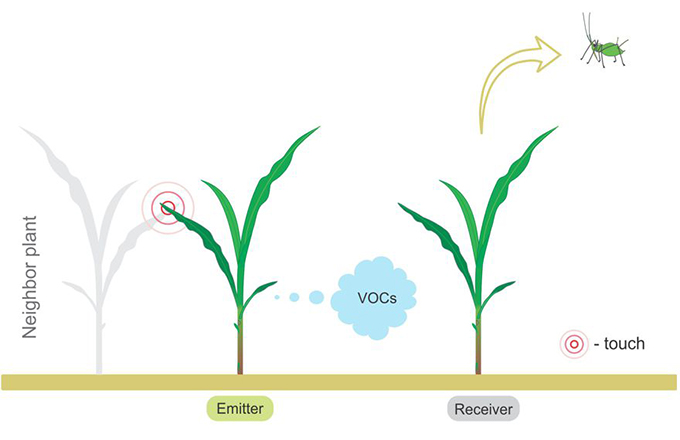
Touch is one of the most common stimuli and the fastest way for plants to detect and gather valuable information about nearby neighbors. Plant response to touch is associated with emission of different signaling substances that can transfer information about the physiological status of emitter to untouched neighboring plants giving this phenomenon a broader significance.
We focus on the wider ecological implications of plant response to touch and their effect on tritrophic interactions. Key research questions include the early detection of changes in volatile emission and gene expression in touched plants and the role of touch induced volatiles in plant-plant interactions both within and between species. Especially, we are interested in induction of defense responses at molecular level either in touched plants or neighbors exposed to touch induced volatiles.
Contact: Dimitrije.Markovic@slu.se in collaboration with Velemir Ninkovic
When nearby plants touch leaves, neighbours’ roots grow away from crowded areas
When and where do birds help plants? Natural enemy interactions and their impact on biological control in agricultural systems
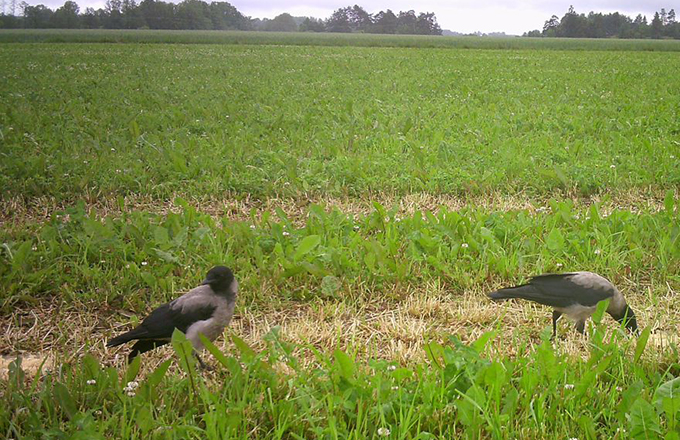
Birds are widespread and abundant predators of agricultural insect pests and their arthropod natural enemies and the foraging strategies of birds can have large impacts on ecosystem functioning. Bird predatory behaviour influences trophic interaction networks by shifting the balance between herbivorous and predatory arthropods and could through antagonistic interactions between enemy guilds reduce efficiency of integrated pest management (IPM).
In this project, we study how birds influence interactions between plants, pests and natural enemies, and how this influence is mediated by herbivore induced plant volatiles (HIPVs). Arthropod enemies can locate herbivorous pests through volatiles emitted by plants, and recent studies show that birds can also use olfaction in foraging. I will use experiments to explore links between crop yields and natural enemy interactions by 1) assessing birds’ ability to learn and apply olfactory cues in foraging, 2) identifying factors which shape arthropod activity patterns in response to bird predators, and 3) evaluating combined effects of plant volatiles and birds on pests, enemies and crops by comparing levels of biological Control in fields with artificial volatile addition and bird exclusion. This project will contribute a new knowledge-base for development of olfaction-based IPM for crop protection, and for integrating effects of birds in IPM strategies.
Contact: Diana.Rubene@slu.se and Velemir Ninkovic
Read more: Birds use plant odours to find insects to eat
EcoStack - sustainable agronomic practices for in-crop generation of ecosystem services
We will investigate how cropping systems based on designed ecological interventions such as mulches or species/variety mixtures have several advantages, including higher yield quality and stability, improved pest, weed and disease control, enhanced ecosystem services, and greater profitability.
Variety mixtures can increase yield stability and suppress insect pests, whilst companion cropping, the planting of crops in proximity (undersowing, intercropping, trap cropping) can improve pollination and pest control, provide habitat for farmland biodiversity and maximize use of space to increase sustainable crop productivity.
Contact and more information: Velemir Ninkovic
Read more: EcoStack – new EU project will combine ecosystem services for optimized crop production
Ladybird chemical tracks - unexplored manner in aphid pest control
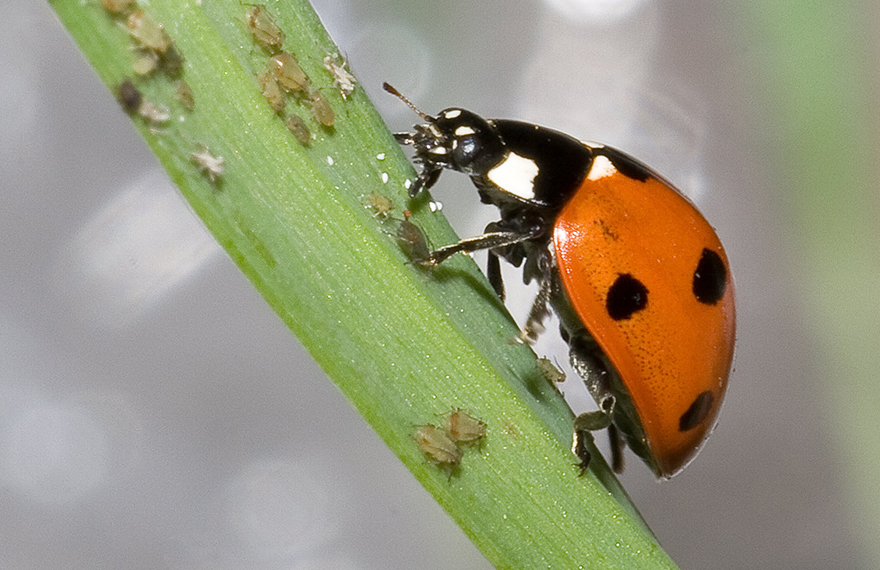
Photo: Sate Al Abbasi
Aims of this project are to investigate how herbivore avoidance of predators contributes to biological control and how it can be exploited for sustainable crop protection. We have shown that pest aphids can detect and avoid the chemical tracks left by ladybirds, a key aphid predator, and plant leaves that respond to them. In this project we will break new ground scientifically.
Contact: Ayse Gül Ünlü, ayse.gul.unlu@slu.se and Velemir Ninkovic
Early Potato Virus Y diagnostic using infrared imaging
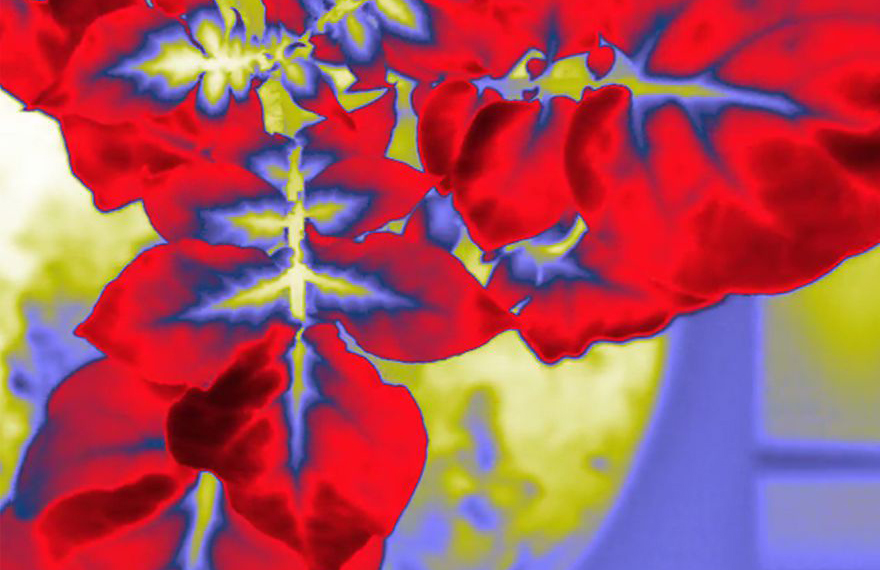
The main goal of the project is to investigate the feasability of, and to develop methods, using infrared imaging to diagnose/identify young PVY infected plants so they can be removed from the field. The point of this is to reduce horizontal spread of the virus keeping the number of infected tubers at an acceptable level.
Contact and more information: Tobias.Lindblom@slu.se and Velemir Ninkovic